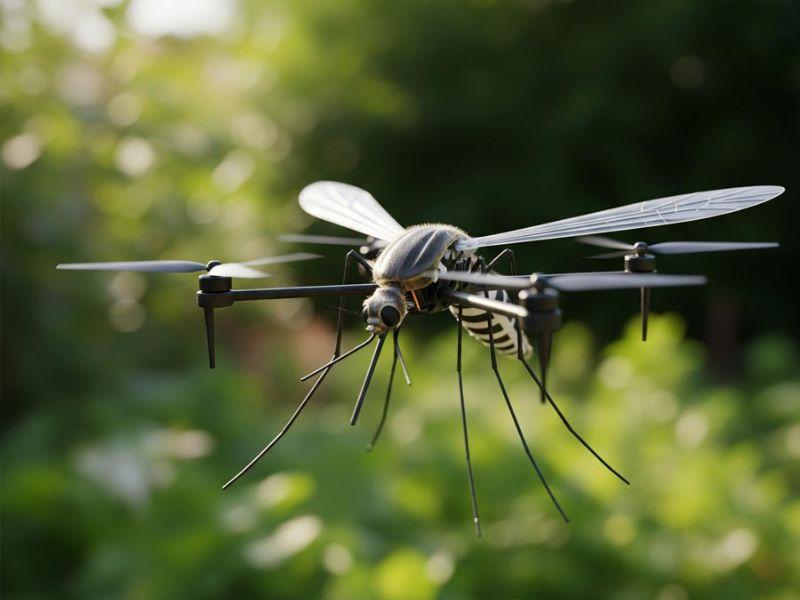With Drones and “Elephant Mosquitoes,” China Wages All-Out War on Chikungunya
In the southern Chinese city of Foshan, authorities and scientists are waging a full-scale battle against chikungunya, a painful mosquito-borne viral disease that has the potential to spread across the country.
Masked soldiers are patrolling parks and streets, spraying insecticide. Drones are flying overhead to detect mosquito breeding grounds. Researchers have released giant “elephant mosquitoes”—whose larvae prey on the virus-carrying mosquitoes—and thousands of mosquito-eating fish have been introduced into ponds and lakes throughout the city.
Chikungunya is spread by the bites of infected mosquitoes. While rarely fatal, it causes fever and severe joint pain. Over the past four weeks, around 8,000 cases have been reported in China, most of them in Foshan—marking the country’s largest outbreak since the virus was first detected there in 2008. Experts say that rising global temperatures have created warmer, wetter conditions, allowing mosquito populations to thrive.
Lessons from the Pandemic
To contain the outbreak, authorities are using a strategy refined during the Covid‑19 pandemic: mobilizing Foshan’s 10 million residents in a “patriotic public health campaign.”
At building entrances, workers spray residents with mosquito repellent before letting them in. Community volunteers in red vests go door to door, inspecting homes and ordering the removal of any standing water.
According to an illustrated government guide, those who refuse to cooperate may face fines and, in serious cases, criminal charges for “obstructing the prevention of infectious diseases.”
With Drones and “Elephant Mosquitoes,” China Wages All-Out War on Chikungunya
In the southern Chinese city of Foshan, authorities and scientists are engaged in an all‑out battle against chikungunya, a mosquito-borne viral disease that, while rarely fatal, can cause intense and debilitating pain. The outbreak threatens to spread across China, prompting an aggressive, multi‑layered public health response.
High-Tech and Biological Warfare Against Mosquitoes
On the ground, masked soldiers patrol parks, playgrounds, and residential areas, spraying insecticide in a bid to reduce the adult mosquito population. Drones have been deployed to spot hard‑to‑reach breeding grounds such as rooftops, gutters, and water tanks.
Scientists are also turning to nature’s own mosquito killers. Giant “elephant mosquitoes”—harmless to humans—are being bred and released because their larvae feed on the larvae of disease‑carrying mosquitoes. In addition, thousands of mosquito-eating fish have been released into urban ponds and water features to keep mosquito numbers in check.
The Outbreak in Numbers
Over the past four weeks, around 8,000 cases of chikungunya have been recorded in China, with the majority in Foshan. This is the largest outbreak since the virus first appeared in the country in 2008.
Chikungunya is transmitted by Aedes aegypti and Aedes albopictus mosquitoes—the same species responsible for spreading dengue fever and Zika virus. The infection typically begins with high fever, followed by severe joint and muscle pain, fatigue, rash, and headache. While most patients recover in a few weeks, some suffer lingering joint pain for months or even years.
Climate Change and the Mosquito Boom
Experts warn that the current outbreak is part of a broader trend. Rising global temperatures and changing rainfall patterns have created warmer, wetter conditions across southern China. This has expanded the habitats of mosquito species that transmit chikungunya and other diseases, increasing the risk of larger and more frequent outbreaks.
Mobilizing the City: Lessons from COVID‑19
The local government has revived a strategy honed during the Covid‑19 pandemic: a citywide mobilization described as a “patriotic public health campaign.”
-
Screening at Entrances: At residential and commercial building entrances, workers spray residents with mosquito repellent before allowing them in.
-
Door-to-Door Checks: Community workers in red vests go house to house, inspecting homes for standing water and ordering its removal.
-
Enforcement: According to an illustrated government explainer, residents who fail to comply face fines and, in severe cases, criminal charges for “obstructing the prevention of infectious diseases.”
Public Reaction and Concerns
While many residents support the strong measures, others say the campaign brings back uncomfortable memories of strict Covid-era restrictions. The combination of military-style patrols, public health volunteers, and surveillance drones has stirred debate over whether the approach strikes the right balance between public safety and personal freedoms.
Looking Ahead
Authorities say they will keep the measures in place until mosquito populations are under control and infection rates decline. In the meantime, researchers are accelerating vaccine development and expanding mosquito-control research, hoping that future outbreaks can be contained without resorting to emergency measures.
For now, Foshan remains at the front line of China’s fight against chikungunya—a battle fought with chemicals, technology, biology, and community discipline.
![]()
Share this content:
